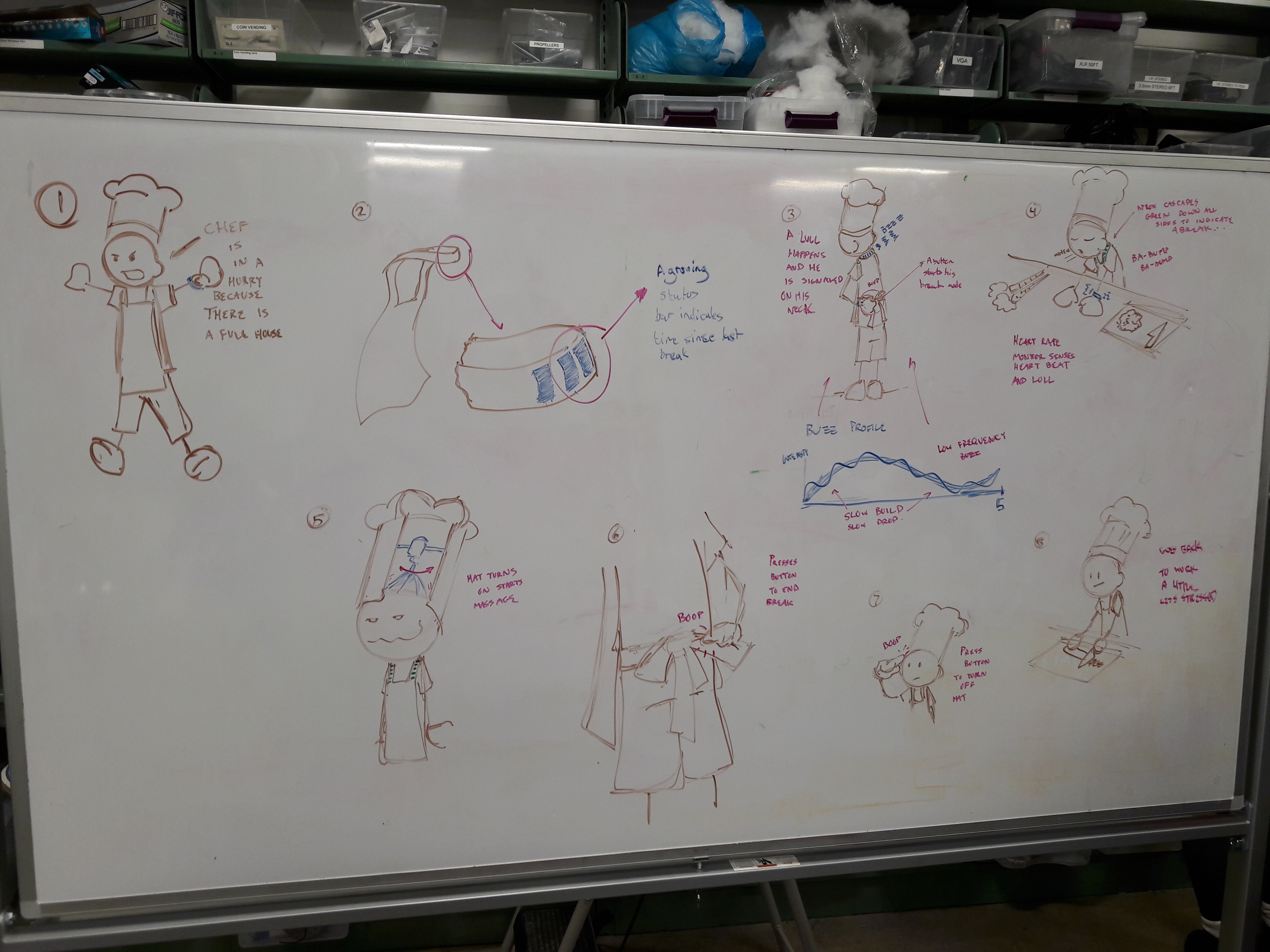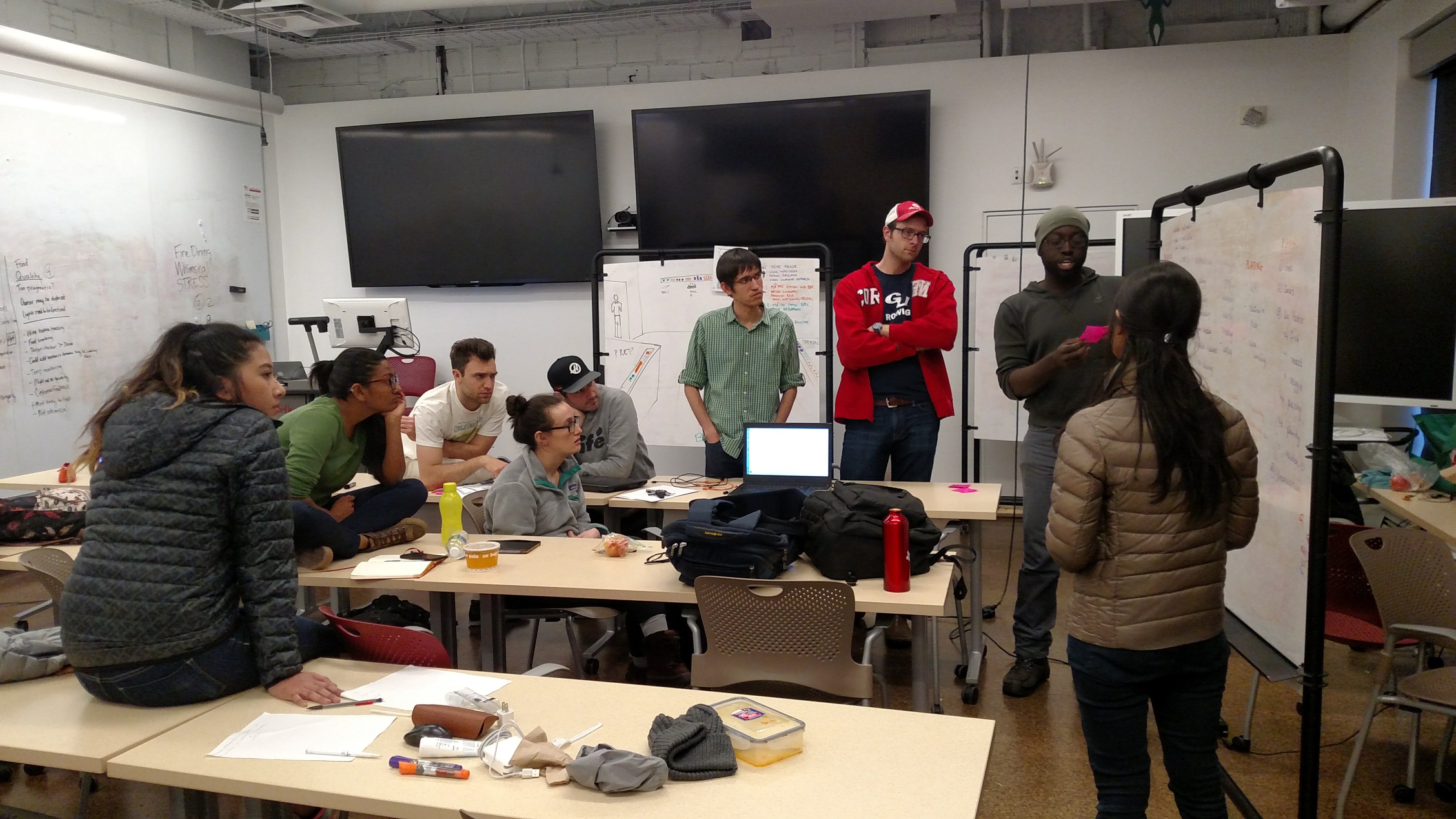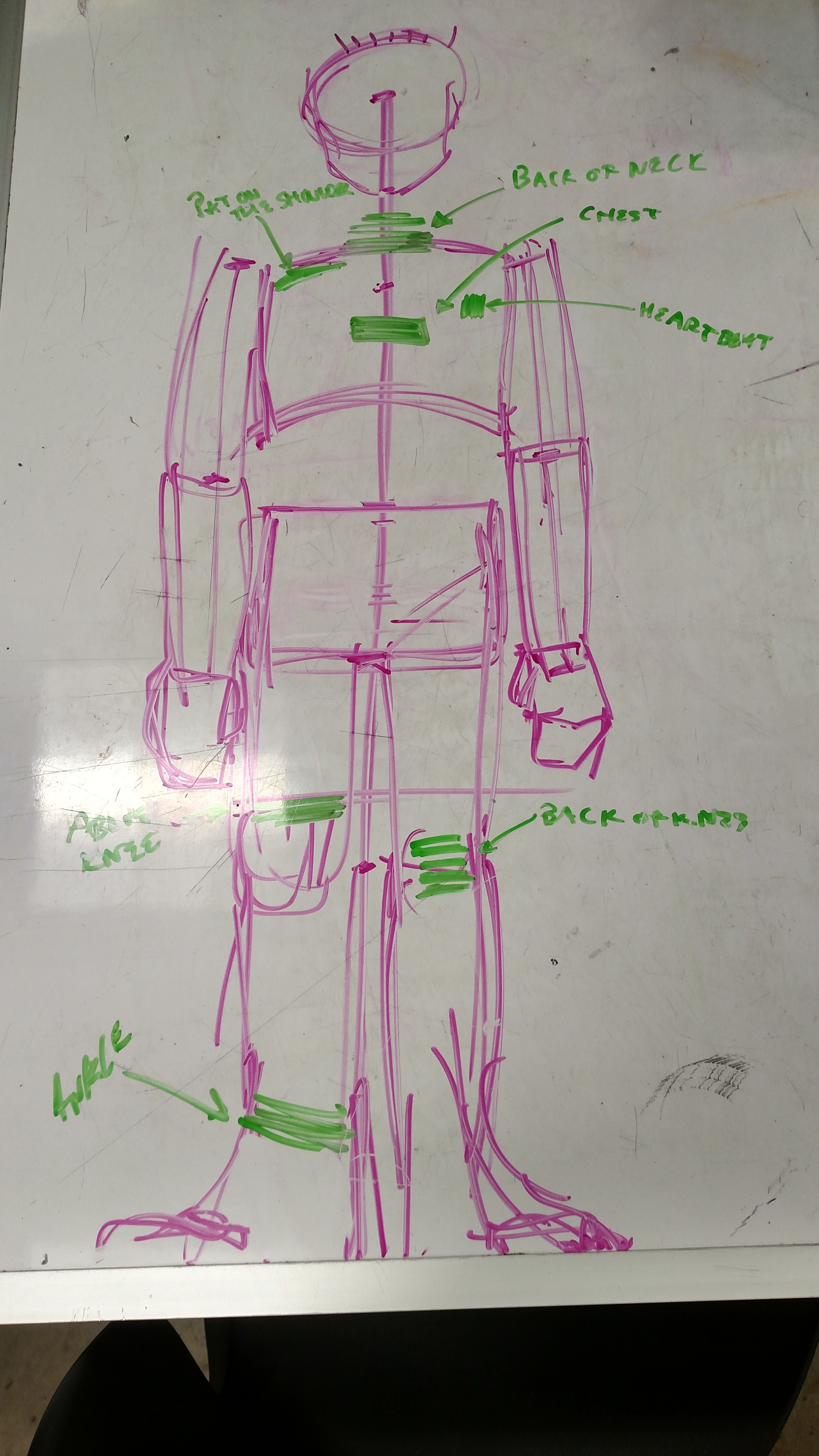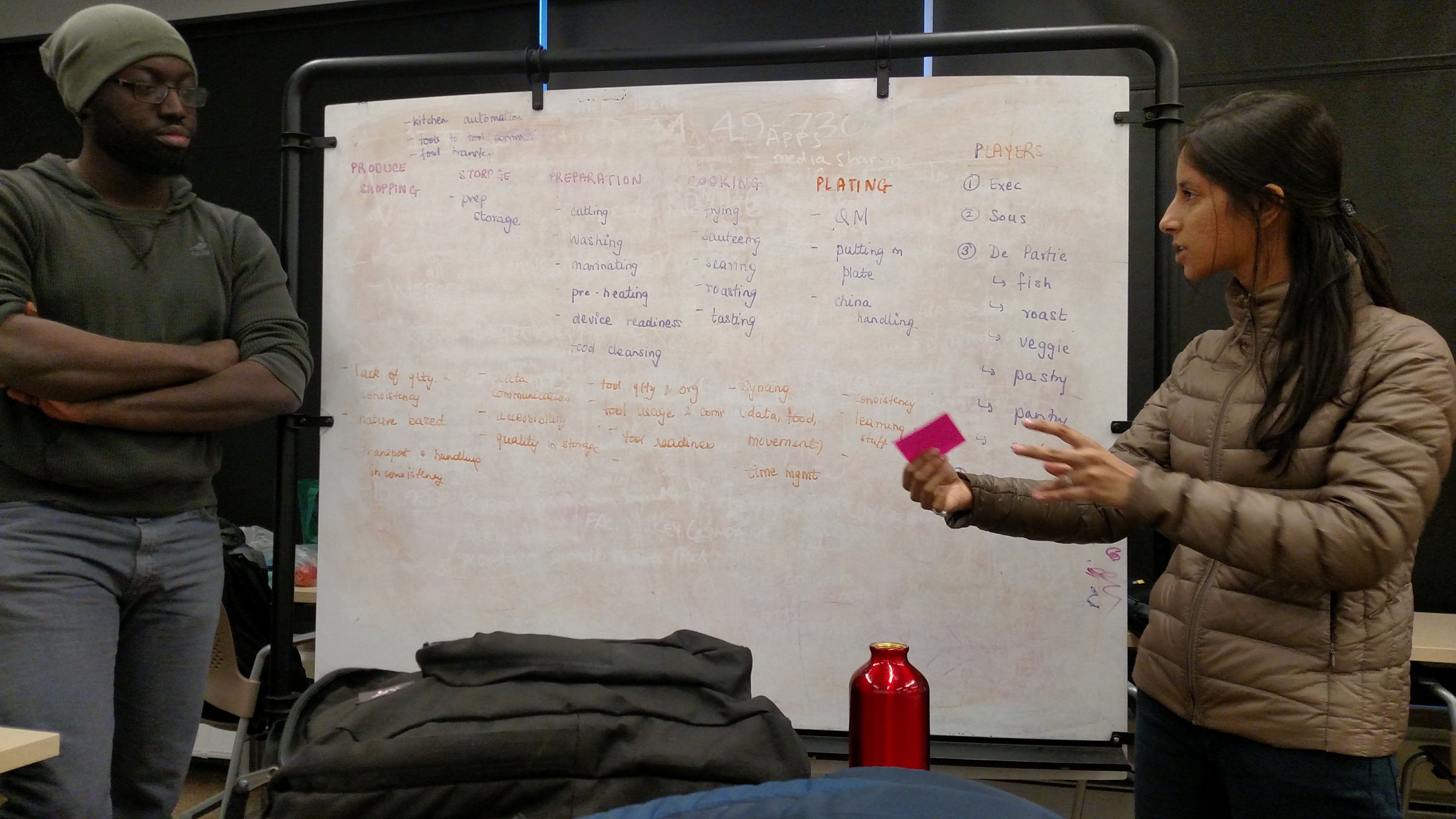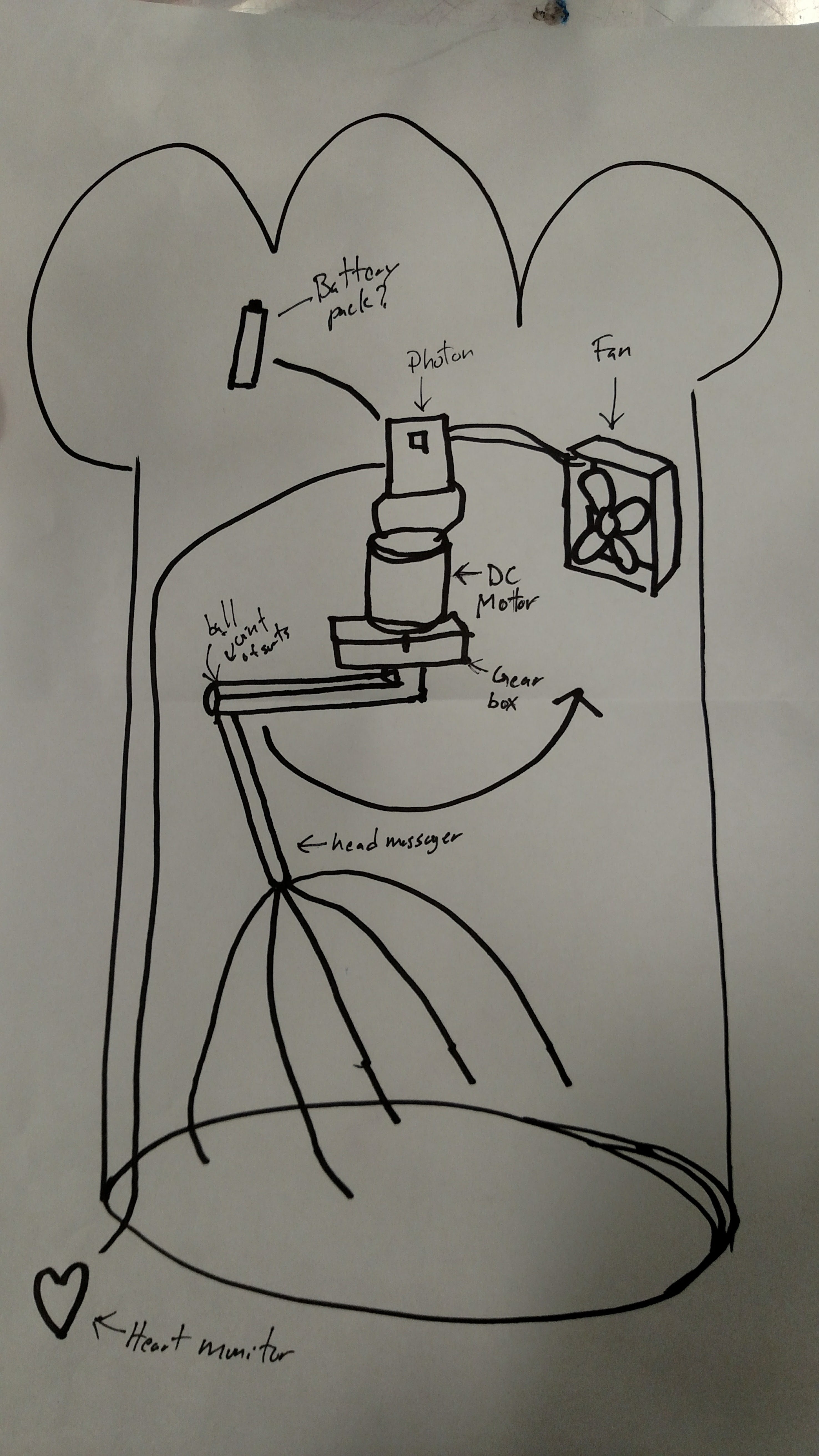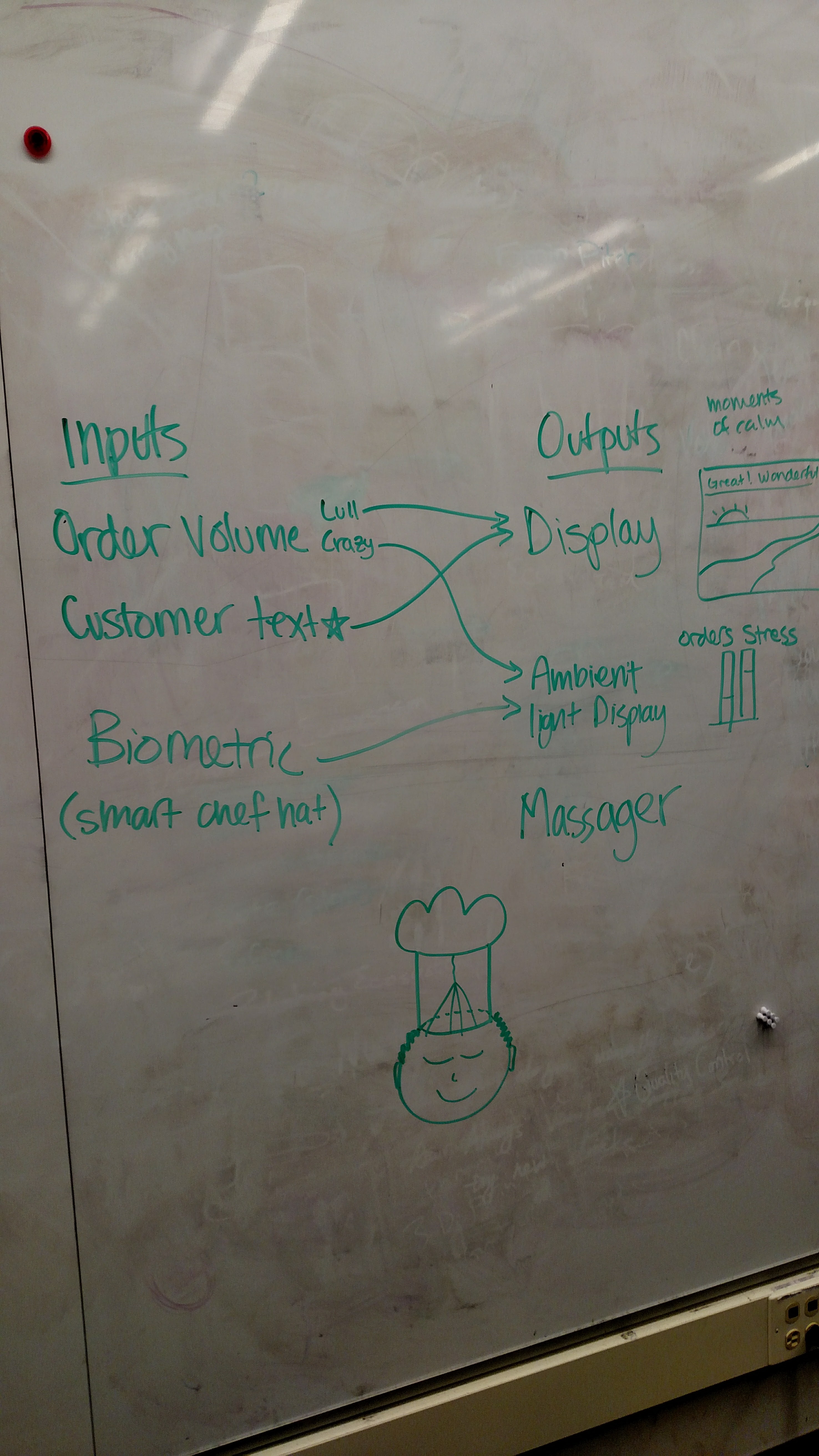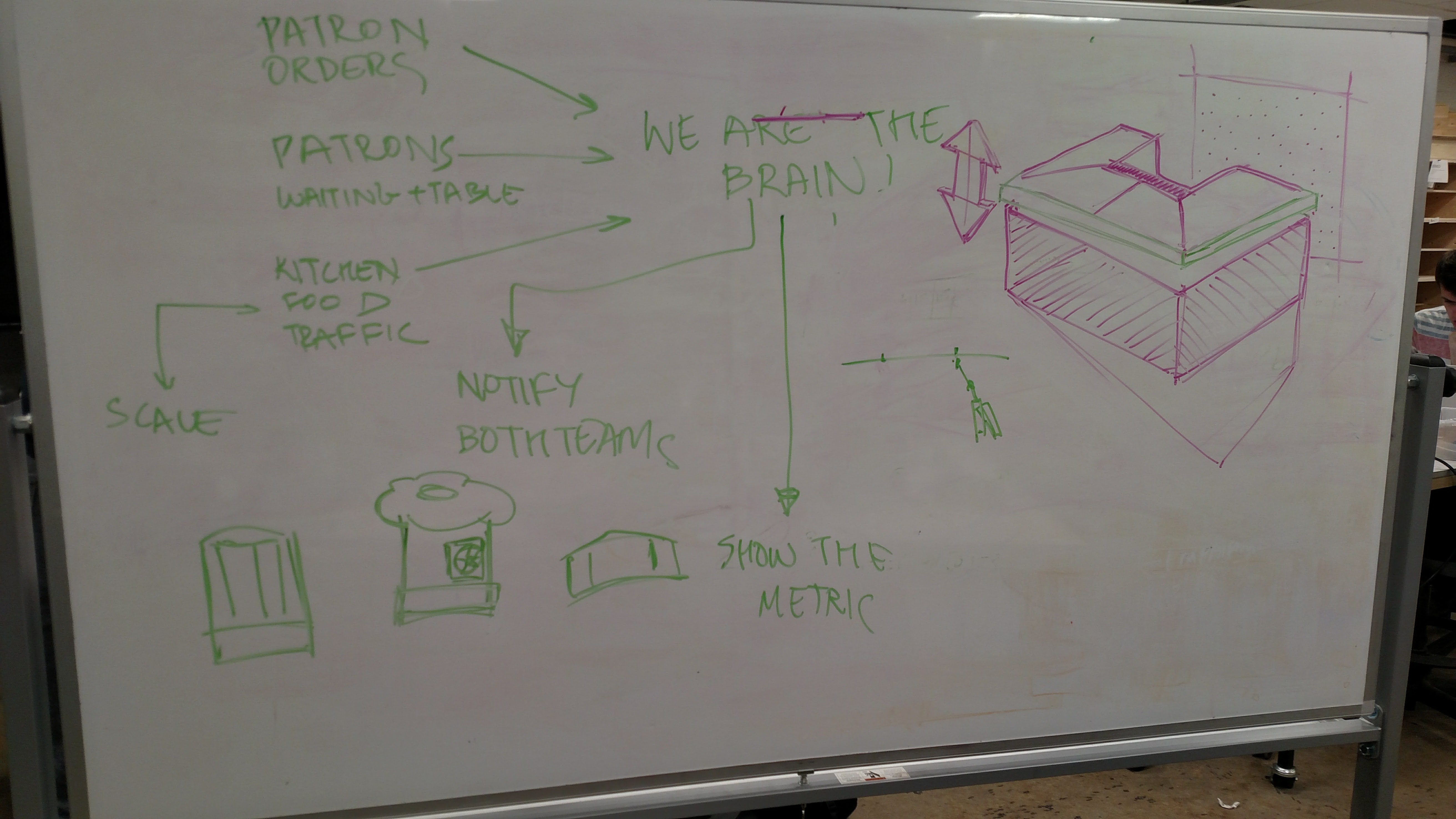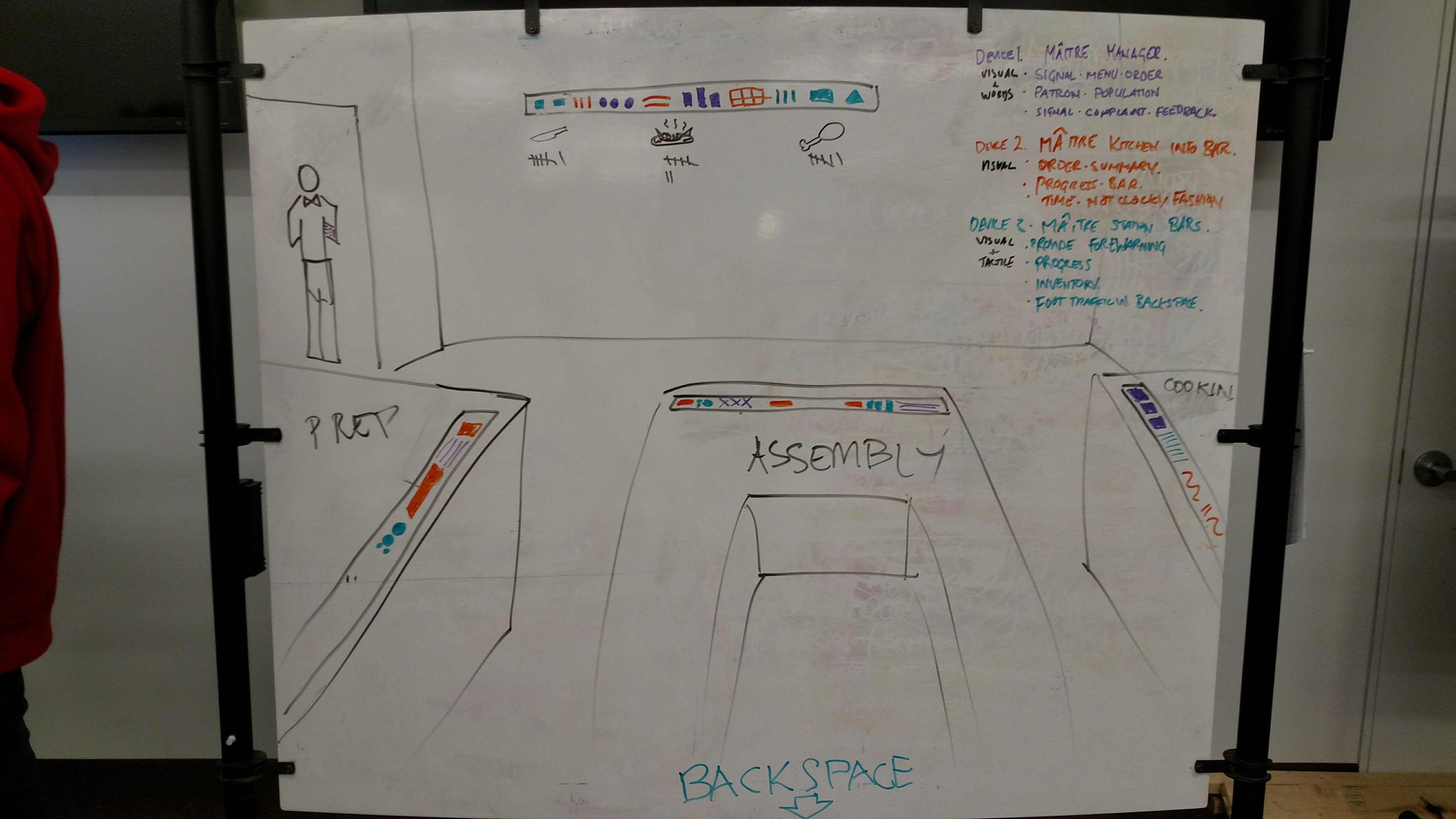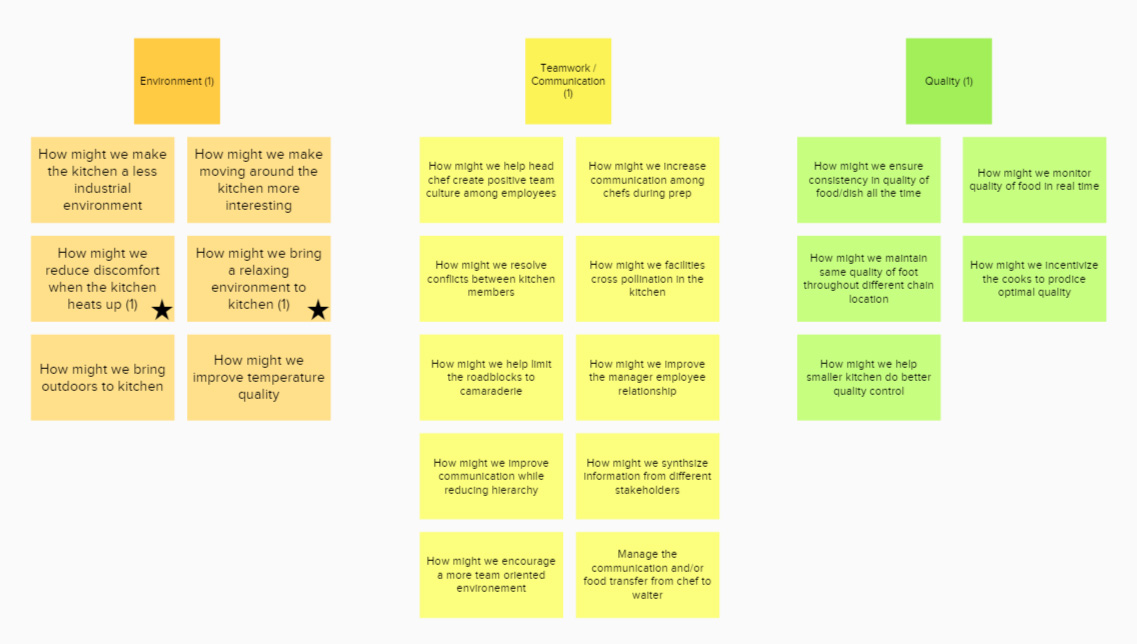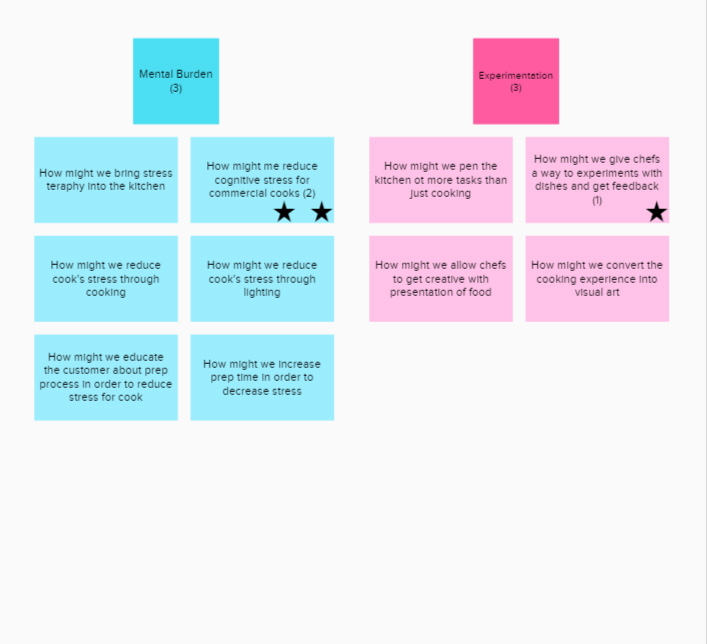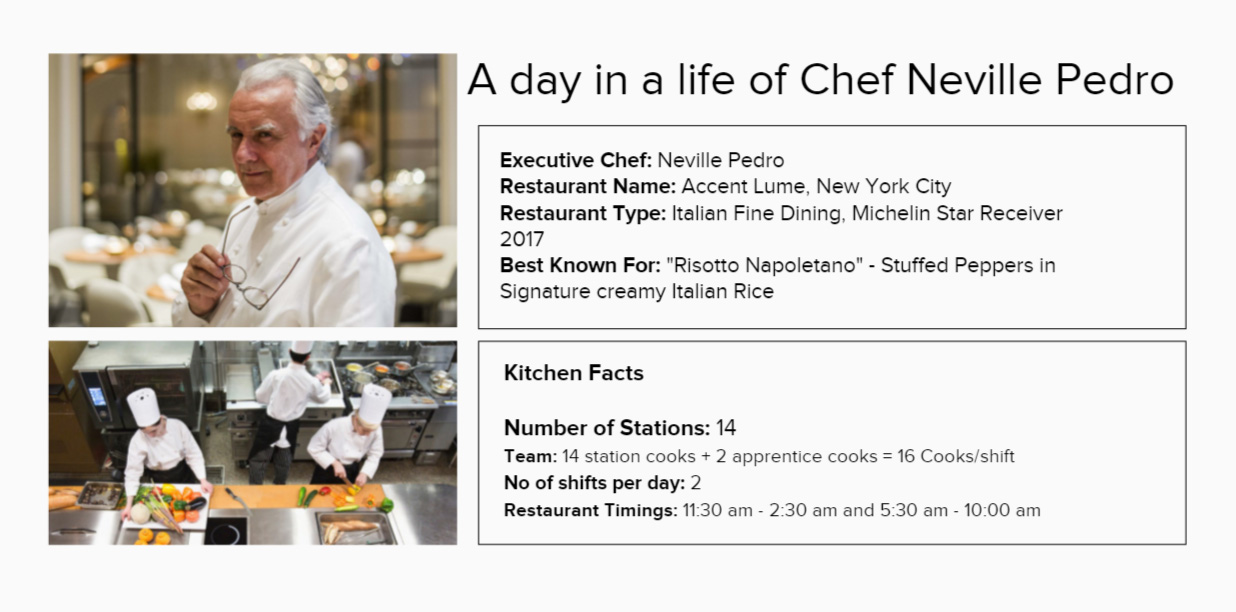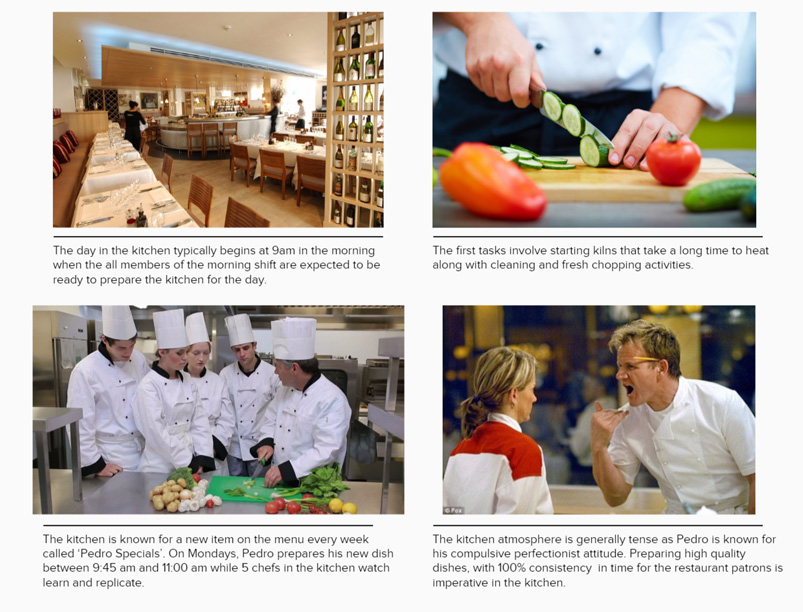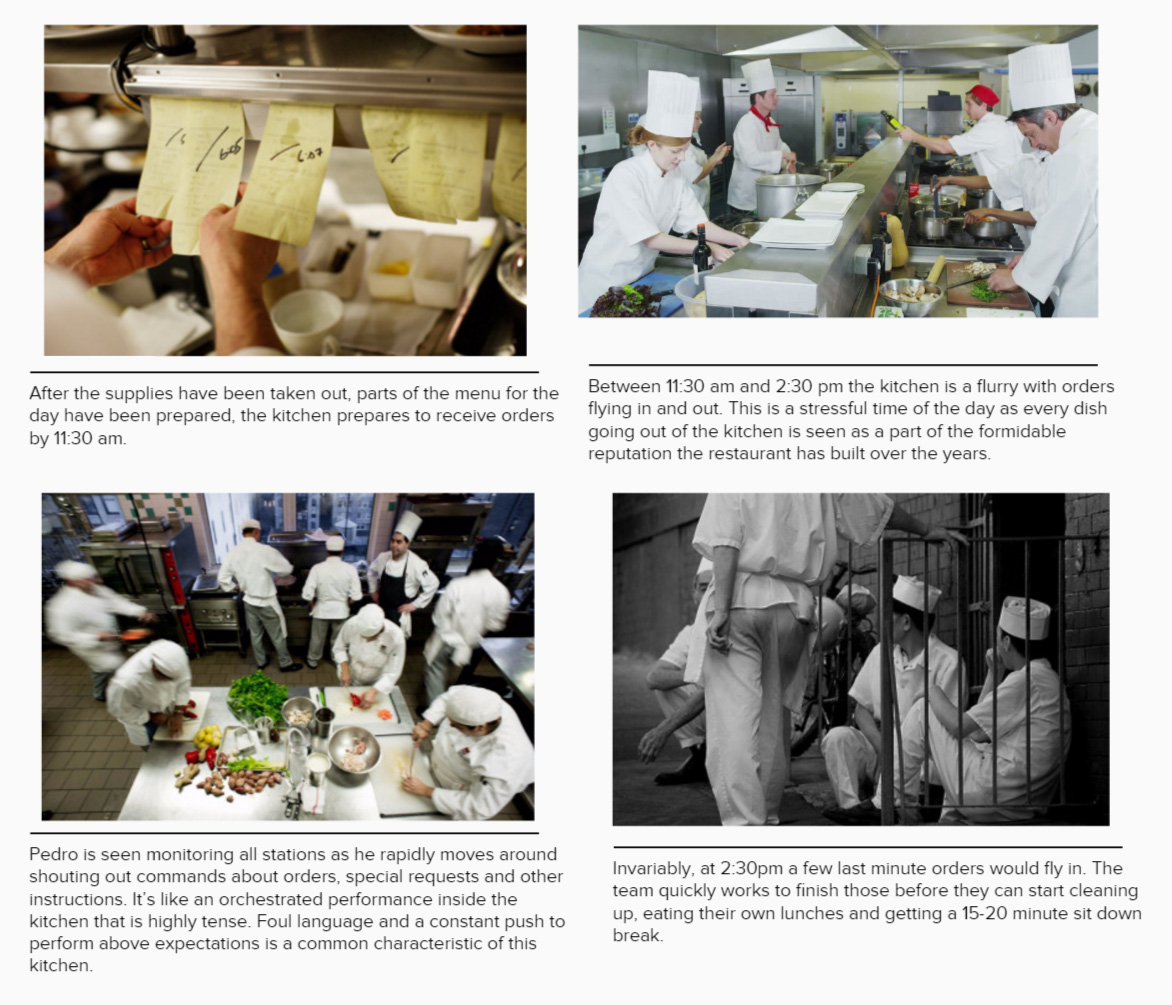Our Process
- The key to working in big groups is getting everyone on the same page.
- Then we went to explore the life of a chef.
- Meanwhile, we kicked off initial ideation, How Might We's and started to form teams.
- Advait jumped in with a great team schedule.
- We had to make some tough calls, so I organized a Design Sprint a la Google.
DECISION ONE: Fine Dining or Fast Food?
We first had to decide what type of kitchen environment we wanted to design for. We ended up deciding (8 to 3) that we preferred designing for the high stress environment of fine dining.
DECISION TWO: Pragmatic or Whimsical?
Our second decision was whether we wanted to come up with a pragmatic or a whimsical solution. We decided to let our design lean toward the whimsical side, trying to add a bit of delight and joy in the highly stressful fine dining kitchen setting as many of us know chefs in the industry and have seen the impact that the high stress environment can have on people.
CATEGORIES: ANYTHING BUT EFFICIENCY
We came up with 7 broad topics to help guide us away from the overly pragmatic design solution of increased efficiency. Those were:
- Culture
- Safety & Sanitation
- Communication
- Stress (mental)
- Food Quality
- Physical Comfort
- Education/Training
We then narrowed down to our top 5 topics (adding menu experimentation)
- Mental Burden / Stress
- Food Quality
- Teamwork / Communication
- Environment
- Menu Experimentation
FINAL TOPIC
We ended up deciding on a combination of Mental Burden / Stress and Teamwork / Communication because those topics were so undeniably important to the fine dining kitchen environment.
